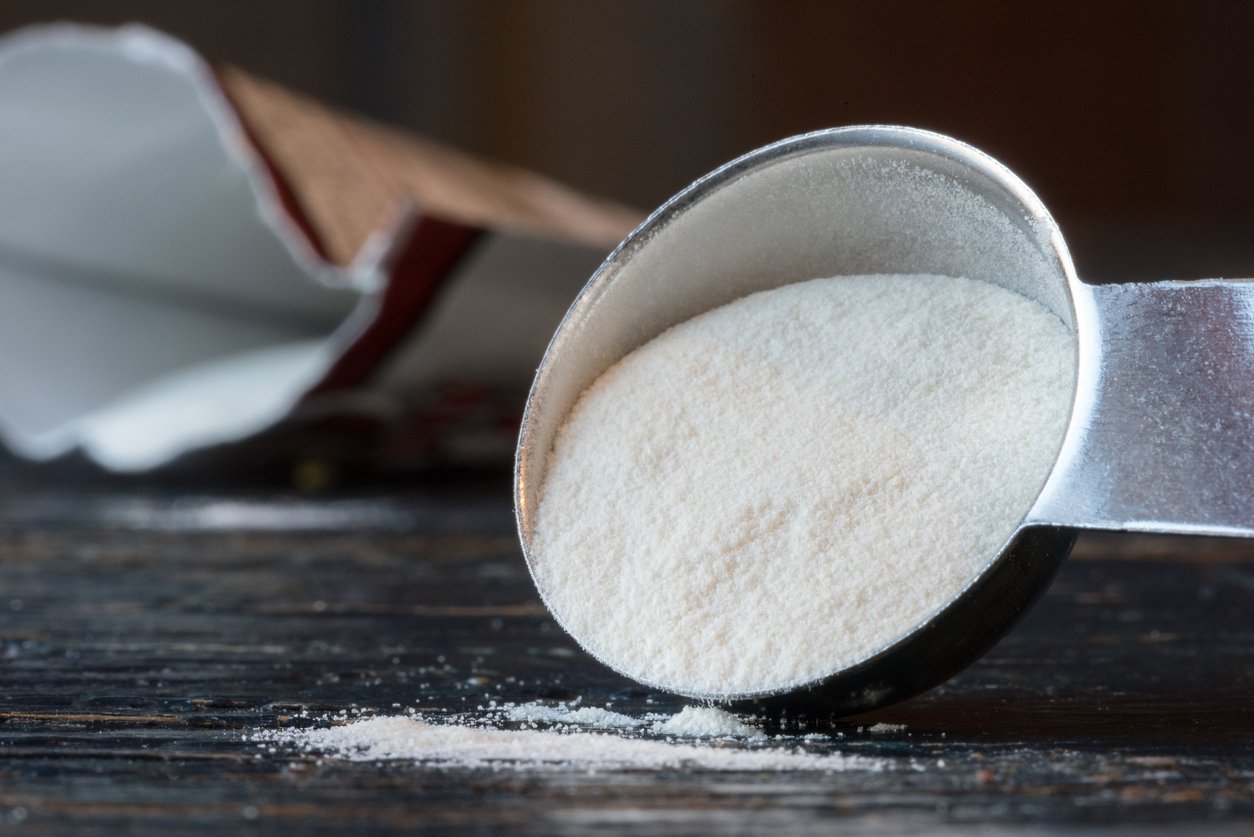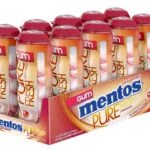Xanthan gum is a type of carbohydrate that is used as a thickening and stabilizing agent in a variety of food products, including gluten-free foods. It is made by fermenting glucose or sucrose with a type of bacteria called Xanthomonas campestris.
In gluten-free baking, xanthan gum is often used as a substitute for gluten, which helps to bind ingredients together and give baked goods a texture similar to those made with wheat flour. It also helps to improve the elasticity and rise of gluten-free doughs and can help to prevent crumbly textures in gluten-free baked goods.
It is also used in salad dressings and sauces, ice cream and other dairy products, and even in some medications. It’s considered generally safe, but some people may have an allergic reaction to it.
Why is Xanthan gum in my food?
Xanthan gum is often used as an ingredient in food products because it has several functional properties that can improve the texture and stability of the food. Some of the main reasons why xanthan gum is used in food include:
Thickening agent
Xanthan gum can thicken liquids, such as salad dressings and sauces, and give them a creamy texture.
Stabilizer
Xanthan gum can help to keep ingredients suspended in a mixture, preventing them from separating.
Emulsifier
Xanthan gum can help to mix oil and water-based ingredients together, preventing them from separating.
Gluten Substitute
In gluten-free baking, xanthan gum is often used as a substitute for gluten, which helps to bind ingredients together and give baked goods a texture similar to those made with wheat flour.
Improving texture and mouthfeel
Xanthan gum can improve the texture and mouthfeel of food products, making them feel creamier, smoother or more satisfying to eat.
It’s worth noting that Xanthan gum is a common ingredient in many processed foods and it’s often used in small quantities. Not all products have it, but it is a common ingredient in many products, specially gluten-free products, and it can be found in many different types of foods.
Is Xanthan gum safe to eat?
Xanthan gum is generally considered safe to eat. The U.S. Food and Drug Administration (FDA) has classified it as a “generally recognized as safe” (GRAS) ingredient. It has been used in food products for over 50 years and has a long history of safe use.
Allergic Reactions to xanthan Gum
It’s worth noting that some people may have an allergic reaction to xanthan gum. Symptoms of an allergic reaction can include itching, hives, and difficulty breathing. If you experience any symptoms of an allergic reaction after consuming xanthan gum, you should stop consuming it and seek medical attention.
Trouble in Digesting it
Also, some people may have trouble digesting it, having symptoms like gas, bloating and diarrhea. In this case, it’s best to reduce or avoid consuming it.
In general, xanthan gum is considered safe for most people to consume in small amounts as part of a balanced diet. However, if you have any concerns about consuming xanthan gum, it’s best to speak with a doctor or a dietitian.
How is Xanthan gum made?
Xanthan gum is made through a fermentation process. The process of making xanthan gum involves the fermentation of a carbohydrate, such as glucose or sucrose, with a specific type of bacteria called Xanthomonas campestris. The bacteria are grown in a nutrient-rich liquid medium containing the carbohydrate and other nutrients.
Fermentaion
The process of fermentation typically takes about 48 hours. During this time, the bacteria consume the carbohydrate and produce a slimy, viscous substance known as a microbial polysaccharide. This substance is then harvested, dried, and milled to form a fine powder.
Drying Xanthan Gum
After the fermentation process is completed, the resulting xanthan gum is a thick, clear, and colorless solution, it is then dried and milled to form a fine powder. The powder is then packaged and shipped to food manufacturers, where it is used as an ingredient in various food products.
The production process is highly controlled and standardized, and the end product is subject to strict quality control measures to ensure that it meets the required specifications for use in food products.
Is xanthan gum healthy to take?
Xanthan gum is considered safe to consume in small amounts as part of a balanced diet. It has been used in food products for over 50 years and has a long history of safe use. There are some potential benefits to consuming xanthan gum, but it’s also important to understand any potential downsides.
what are the benefits and drawbacks of taking xanthan gum?
Benefits:
- Xanthan gum can help to improve the texture and stability of food products, making them feel creamier, smoother, or more satisfying to eat.
- In gluten-free baking, xanthan gum is often used as a substitute for gluten, which helps to bind ingredients together and give baked goods a texture similar to those made with wheat flour.
- Xanthan gum can help to thicken liquids, such as salad dressings and sauces, and give them a creamy texture.
- Xanthan gum can help to keep ingredients suspended in a mixture, preventing them from separating.
- Xanthan gum can help to mix oil and water-based ingredients together, preventing them from separating.
Not Good for some
- Some people may have an allergic reaction to xanthan gum, symptoms can include itching, hives, and difficulty breathing.
- Some people may have trouble digesting it, having symptoms like gas, bloating and diarrhea.
- It’s not a nutrient and it doesn’t provide any essential vitamins or minerals.
- It’s a processed ingredient and excessive consumption could have an impact on gut health.
In general, it’s important to consume xanthan gum in moderation and to speak with a doctor or a dietitian if you have any concerns about consuming it. It’s also recommended to read the ingredient list on food products and to check the quantity of xanthan gum that is added to the product.








